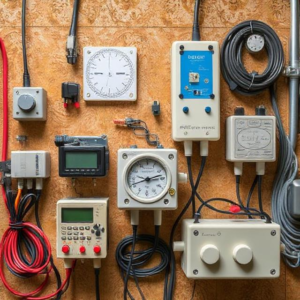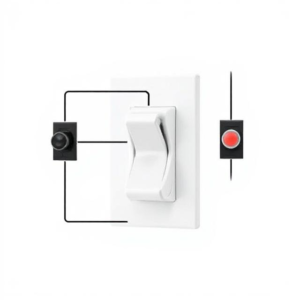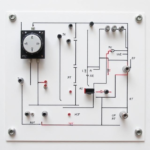Circuits
A circuit is a path for the flow of electricity. It consists of:
- A power source(e.g., battery).
- Conductors(wires).
- A load(device like a light bulb).
- A switch to control the flow.

AC vs. DC
- DC (Direct Current): The flow of electric charge is in one direction. Example: A battery produces DC electricity.
- AC (Alternating Current): The electric charge periodically reverses direction. Example: Wall outlets supply AC power in homes.
Power
The electrical power is the rate at which electrical energy is used or produced. It’s calculated by:
P=V×I
- P is power (measured in watts).
- V is voltage.
- I is current.
If you multiply the voltage (push) by the current (flow), you get the power (in watts).
Types of Circuits:
- Series Circuit: Components are connected end-to-end. If one component fails, the entire circuit is broken.
- Parallel Circuit: Components are connected in parallel branches. If one component fails, the others still work.
Common Electrical Devices are :
- Resistor: A component that limits the current flow, creating resistance in a circuit.
- Capacitor: Stores electrical energy temporarily and releases it when needed.
- Inductor: A coil of wire that stores energy in a magnetic field when current flows through it.
- Diode: Allows current to flow in only one direction.
- Transistor: A device used to amplify or switch electrical signals.











